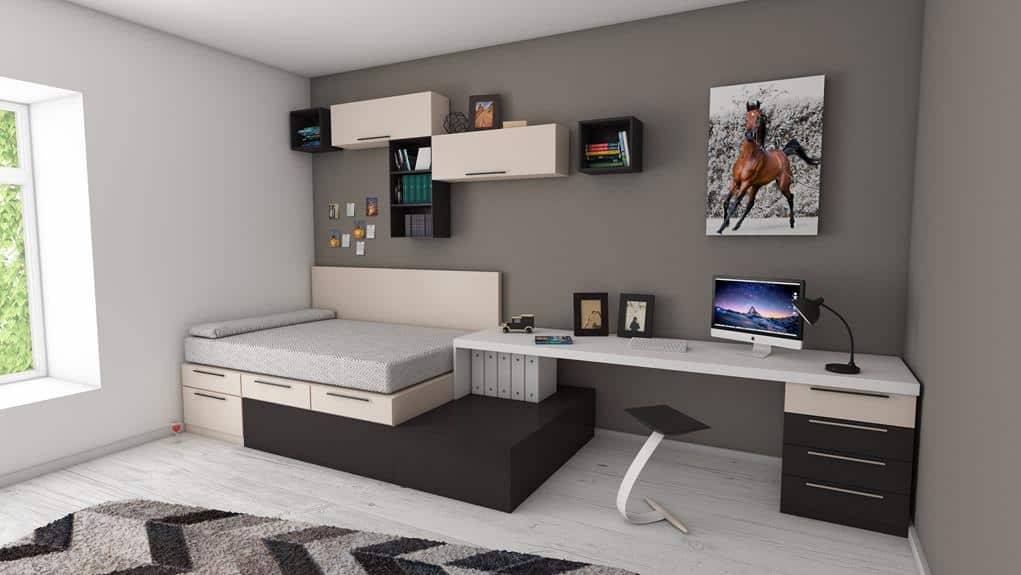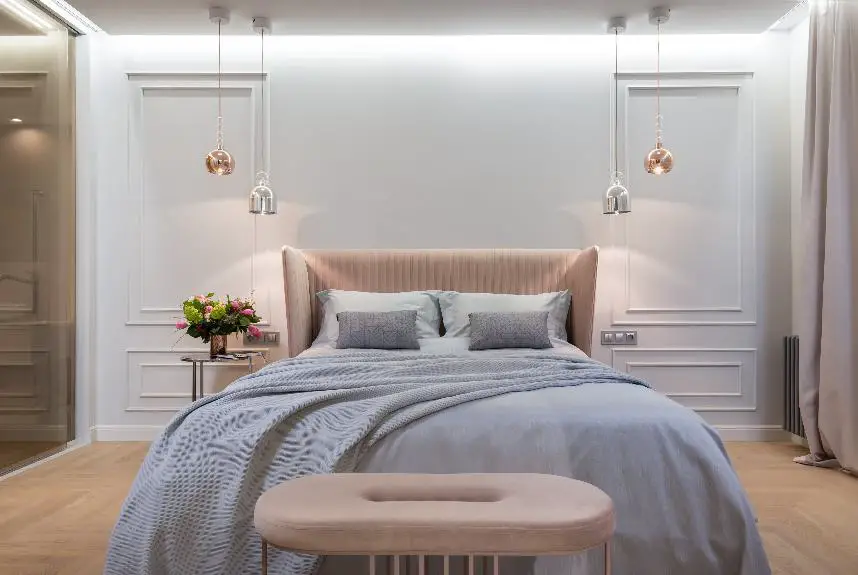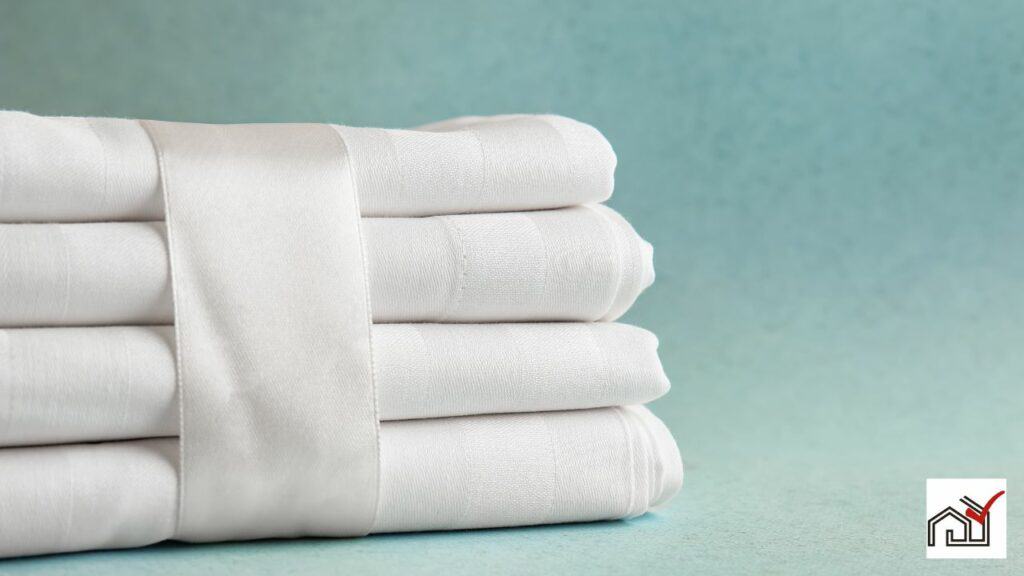Adding a rug to a bedroom has both functional and aesthetic benefits.
Functionally, it provides insulation, comfort underfoot, and helps reduce noise.
Aesthetically, a rug can tie together the room’s decor, complementing furniture and accessories for a unified look.
When choosing a rug, size, texture, and pattern are important to consider as they can greatly affect the room’s feel.
It’s also important to think about maintenance and durability.
While a rug is not essential, it can enhance the bedroom by combining practicality with visual appeal.
The decision to include a rug often comes down to personal taste and the specific needs of the bedroom.
The Comfort Factor
Adding a rug to a bedroom increases comfort by providing a soft surface to step on each morning. A rug can change the feeling of the room, making it more relaxing and inviting due to its plush texture, which hardwood floors do not provide.
When choosing a bedroom rug, size is important. A larger rug covers more area, which means more consistent softness to step on. It also anchors the furniture, adding to the room’s aesthetic. It is often recommended to place a large part of the rug under the bed with enough space around it to enhance both its look and feel.
For extra comfort and longevity, a rug pad underneath the area rug is beneficial. It adds softness, insulation, soundproofing, and increases the rug’s durability. A large rug with a quality rug pad can greatly improve the bedroom’s coziness.
A well-chosen rug is both functional and decorative. It provides a barrier between your feet and a cold floor and enhances the room’s look. Adding the right rug to a bedroom design significantly impacts the comfort and luxury experienced daily.
Aesthetic Enhancement
A rug can enhance the look of a bedroom by tying together the design elements and improving the room’s aesthetic. Using area rugs in bedrooms is an effective way to add visual interest. Strategically placing a rug can influence the room’s atmosphere by adding texture and color. In a large bedroom, a rug can make the space feel cozier and unify different decor pieces.
The pattern, color, and texture of a bedroom rug are important for the room’s design. It complements the bed, matching with the bedding, furniture, and wall colors. The right rug can set the tone for the bedroom’s decor, serving as a basis for choosing matching colors and decor. An area rug can enhance the bed’s look and add depth to the room’s design.
The rug’s size is important for the right effect. A large rug that extends 18 to 24 inches past the bed on all sides looks balanced and adds a sense of luxury. Careful rug selection and placement are vital for a well-designed and cohesive bedroom, and are key for those looking to improve the appeal and comfort of their space.
Rug Sizing Essentials
Choosing the right rug size is important for the balance and design of a bedroom. A rug should have 10-20 inches of bare floor between the wall and its edge, which frames the bed and complements the room size.
For a queen bed, use a rug that extends beyond the bed to provide a comfortable area to step on. The rug should be visible around the bed and match the room’s scale to balance the space and add warmth.
In larger rooms with king beds, a bigger rug is better for proportion. Layering a decorative rug over a larger jute or sisal rug can add to the decor, but keep three-quarters of the base rug exposed.
For children’s rooms, select durable, easy-to-clean rugs that fit well without touching furniture like dressers. The right rug size enhances both the room’s functionality and aesthetic.
Practical Considerations
Rug placement enhances both the look and functionality of a bedroom, providing noise reduction and comfort. When choosing a rug size, it’s important to select one that matches the scale of the room. Typically, a rug should have 10-20 inches of space from the edges to the wall to frame the room effectively.
For added comfort, a rug can be placed under the bed, extending 18-24 inches beyond the bed’s sides to provide space to step on when getting out of bed and define the sleeping area visually. In larger bedrooms, a bigger rug can include the bed, nightstands, and a bench at the foot of the bed.
The layout of the bedroom should guide rug placement. In smaller rooms, a smaller rug in front of the bed or runners on the sides may be more appropriate, ensuring the rug is proportional to the space without covering the entire floor.
Careful consideration of these details will ensure the rug adds both style and practicality to the bedroom.
Maintenance and Care
To maintain and care for a bedroom rug, there are several steps you can follow:
- Regularly vacuum the rug to remove dust and debris.
- Attend to spills and stains immediately to avoid permanent marks.
- Rotate the rug periodically to distribute wear evenly and prolong its life.
- Have the rug professionally cleaned yearly.
- Use rug pads to prevent wear from friction and to keep the rug in place.
Alternatives to Bedroom Rugs
Alternatives to bedroom rugs provide both functional and visual advantages.
Wall-to-wall carpeting is a good option for those who want a warm, cohesive look and improved sound insulation without worrying about rug size or placement.
For a clean, low-maintenance option, hardwood or laminate floors are suitable, especially in minimalist or modern decor. To add softness where needed, small accent rugs can be placed by furniture or the bed’s foot.
In bedrooms with substantial furniture, a full-sized rug may not be necessary. A simple runner beside the bed can offer comfort without a large rug’s commitment, making it a flexible and cost-effective choice.
Considering these alternatives allows for customized bedroom flooring that meets personal style and comfort needs.




